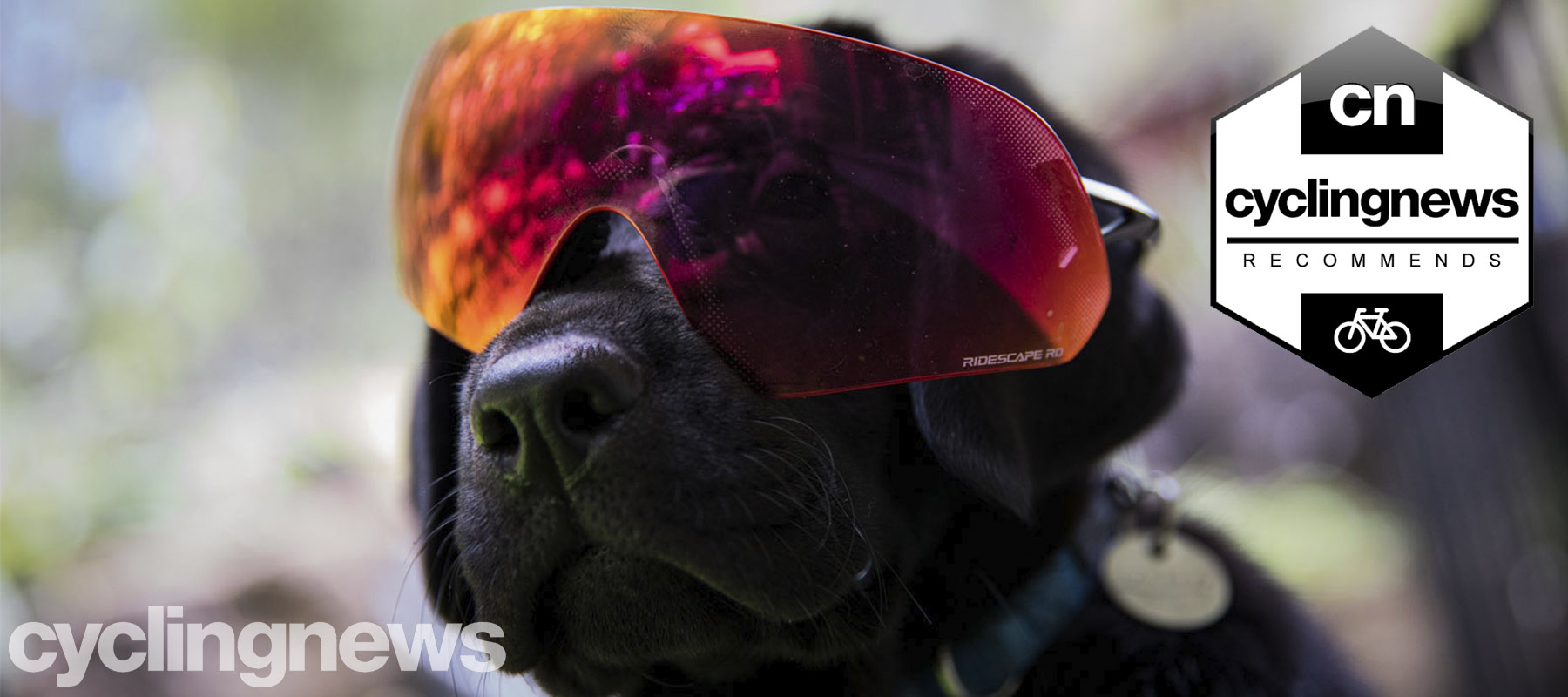Cyclingnews Verdict
Shimano's RideScape lens offers a surprising amount of visual clarity and does well to enhance contrast and fine details. Better still the Aerolite P sunnies look great and don't break the bank
Pros
- +
Tuned optics
- +
Lightweight
- +
Looks
Cons
- -
Sit a little too close to your face
You can trust Cyclingnews
The brand new Aerolite P RideScape RD sunglasses from Shimano are the latest offering from the brand that can literally outfit you head-to-toe, including from shoes to shifters. Especially now that it also owns Lazer and Pearl Izumi.
Shimano has always produced interesting eyewear that features tech like partial polarization and reversible nose pads, but to top all that off, its latest eyewear release includes its new RideScape lens.
Made from a new material, this new lens technology offers optics tuned for specific riding environments, as we've seen from many of the other best cycling sunglasses.
Design and aesthetics
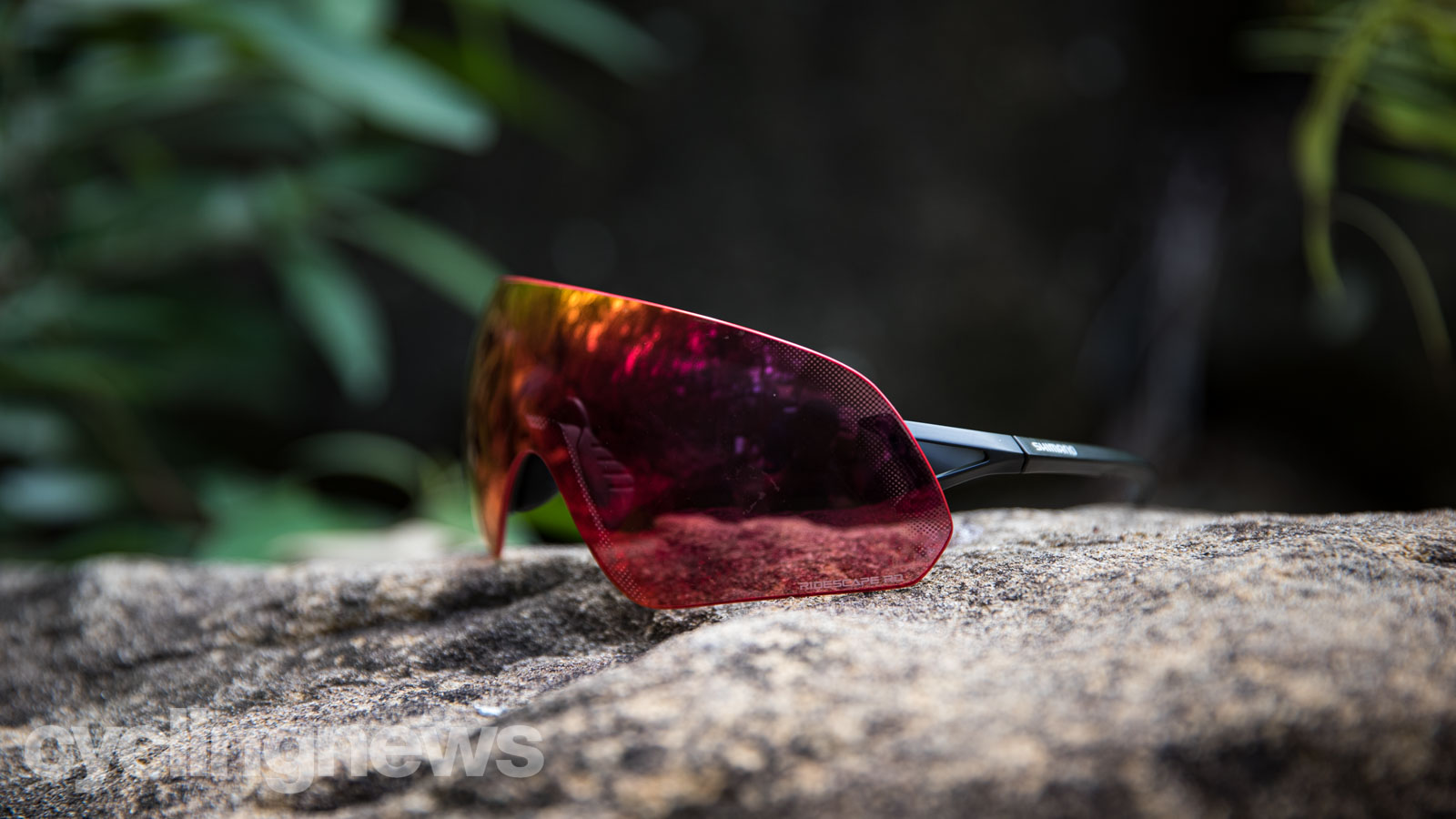
Tuned optics have been around for a while; Oakley has its Prizm lens, Smith has Chromapop, Spy has the Happy lens, and the list goes on. On paper, some claims sound fantastical, but the science behind them is sound and in my experience, they do well to increase contrast and amplify fine details.
Shimano calls its tuned eyewear RideScapes. It tailors the 'colour transmittance curve' to make the important elements of a given riding environment pop while also getting rid of the unwanted light and colour frequencies that can hamper contrast and cause eyestrain.
One way that Shimano was able to achieve this was through swapping from a polycarbonate lens to a polyamide one, which not only reduced the overall weight of the glasses — from 25.6g to 23.6g in the S-Phyre R sunnies — it also affects the way the light is reflected and dispersed through the lens, which can make objects or finite details appear blurry. The measure of this clarity is called the Abbe value. According to Shimano, the polyamide lens also offers a higher Abbe value than the polycarbonate previously used across its eyewear range.
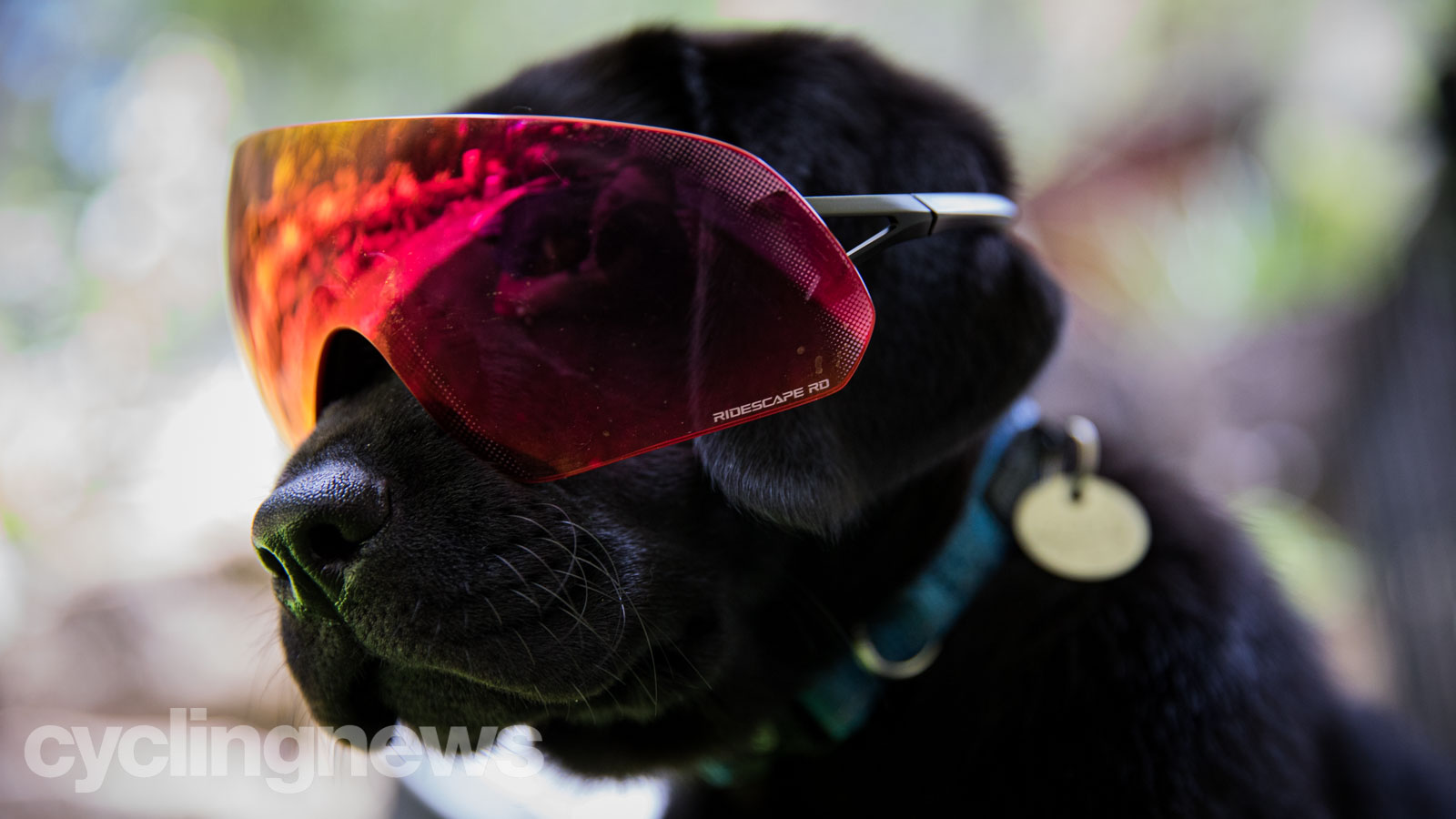
The test sample I received is a new frame (or lack thereof) called the Aerolite P with the RideScape RD (Road) lens. The orange base lens has a red iridium coating and Shimano's hydrophobic and anti-scratch treatment. The brand claims the road tint boosts asphalt contrast and visibility, reducing eyestrain making it easier to spot and react to hazards like potholes and rocks from afar.
Shimano is also offering four other RideScape lenses: the ES (Extra Sunny) lens designed to minimize light transmittance and reduce glare to reveal the road texture; the GR (Gravel) lens is said to boost the contrast of a wide range of surfaces to highlight subtle transitions between gravel, dirt, and asphalt; OR (Off-Road) which is tuned to reduce sun leaks when riding in specked light and bring out the details in rock, soil; and CL (Cloudy) which is the opposite of extra sunny, and is designed to boost light transmission in dark, cloudy and wet riding conditions, while also featuring an antiglare coating to reduce dazzling from oncoming headlights.
Tipping my scales at 24g, the Aerolite P weighs the same as the Oakley EV Zero Path and provides a bit more coverage. They come with a hard case, small and large rubber nose pads, and of course, a microfibre cloth bag.
Ride experience
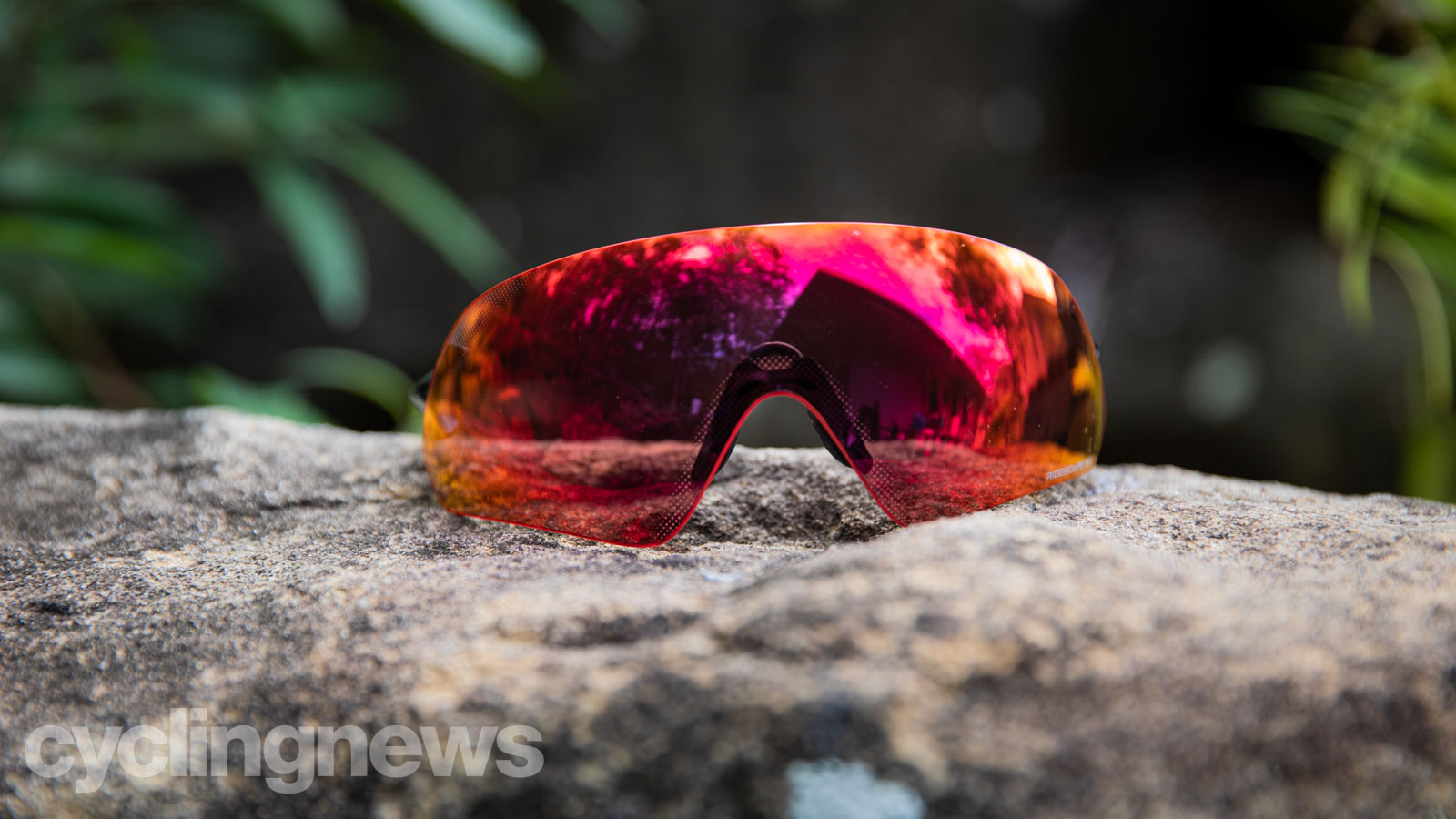
I am a firm believer in the benefits of tuned eyewear; if you can see better, you tend to ride better. There is absolutely an increase in contrast and detail when you put the RideScape lens on, and the texture of the tarmac pops against the dark background of the asphalt.
Compared back to back with the Oakley Prizm Road lens, the RideScape RD lens adds more contrast and reveals more information about the road's texture — to my eyes at least. Having said that, it’s not quite to the level of the original Prizm Trail lens that turned the contrast up to 14 and gave you a headache after about 30 minutes. They do make road markings, and things like reflectors pop, but not to the level of Oakley's lens.
I would probably opt for the ES (Extra sunny) lens for riding solely on the road in Australia as the visible light transmission is a hair bright for my taste, but even riding in full sun, you aren’t left squinting. The upside is that you can still see if you end up on a darker section of road or one covered by tree canopy.
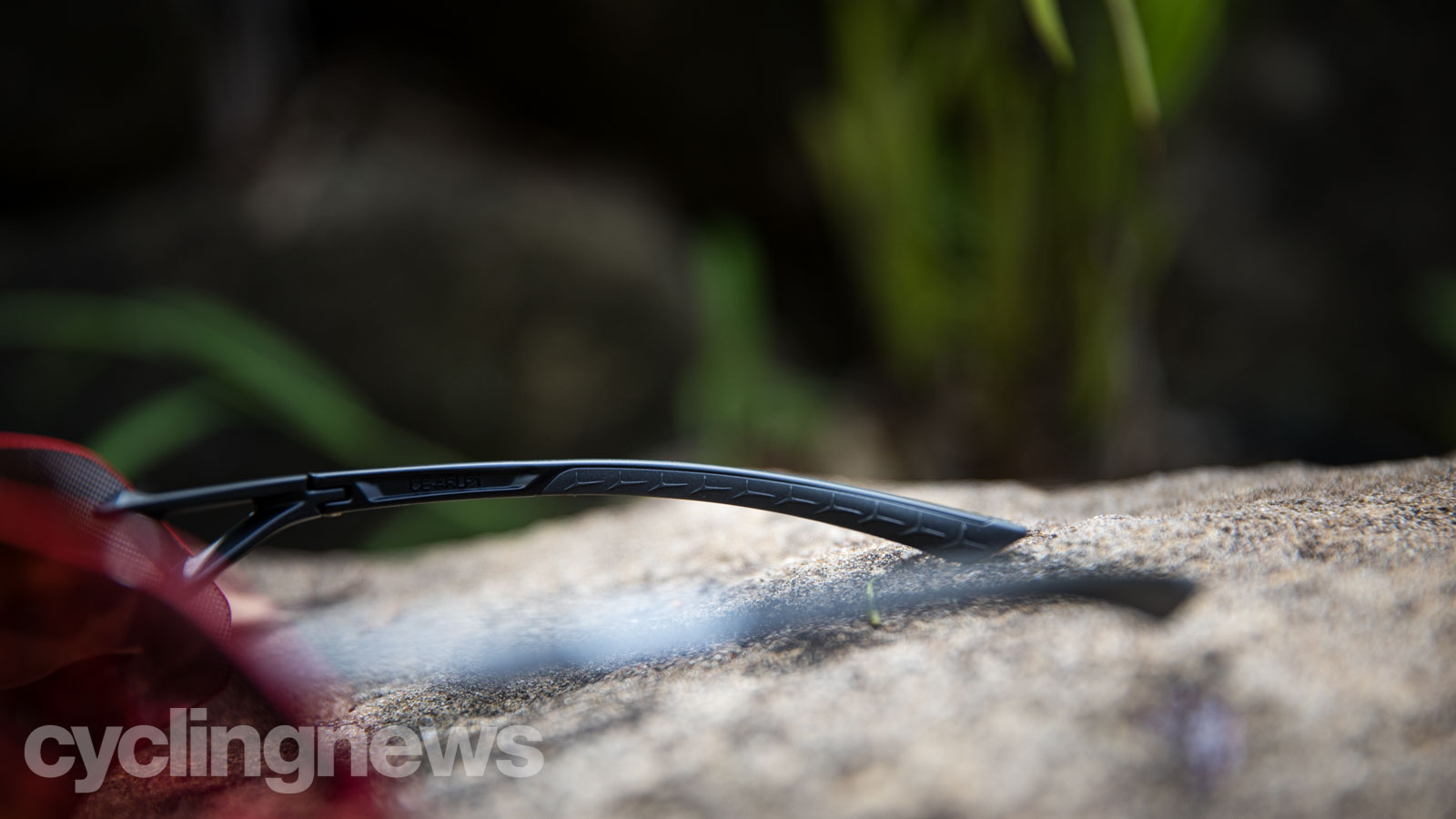
When you leave the tarmac, the lens performs admirably and still does well to convey the nooks and crannies of a gravel road or a techy bit of singletrack. Some of this versatility is thanks to the lighter tint. Most road-tuned lenses seem to be based around the full sun, so when you do end up in the shade or under tree cover, it can feel a bit like you're wearing blinders and can make it hard to spot road furniture in darker environments.
The coverage is massive, and the Aerolite P provides a colossal shield that pushes the edge of the lens well out of your range of view, even when hunched in the drops. The lens also comes around far enough to prevent light leaks that can leave you dazzled when riding through speckled sunlight.
Being so light, the Aerolite P disappears on your face, and the arms have just the right amount of tension that they don’t slide down your nose, but also don’t give you a headache. The inside of the ear stock is also coated with rubber, and their length seems to play nice with most helmet retention systems from Scott, Bontrager, POC, and Limar — though there is a bit of overlap on the Lazer Genesis.
These sunnies have done well to avoid fogging; even on a ride where the mercury touched 100F/39C with 90-per cent humidity, and when grinding up slow climbs, the Aerolite P stayed completely mist free. However, they do sit quite close to your face, and as a result, I had smudges on the inside of the lens from my eyebrows touching the lens on every ride. There also isn’t a tonne of airflow behind the lens, even with the vents in either arm, meaning they get quite hot on climbs — likely the result of the proximity to your face.
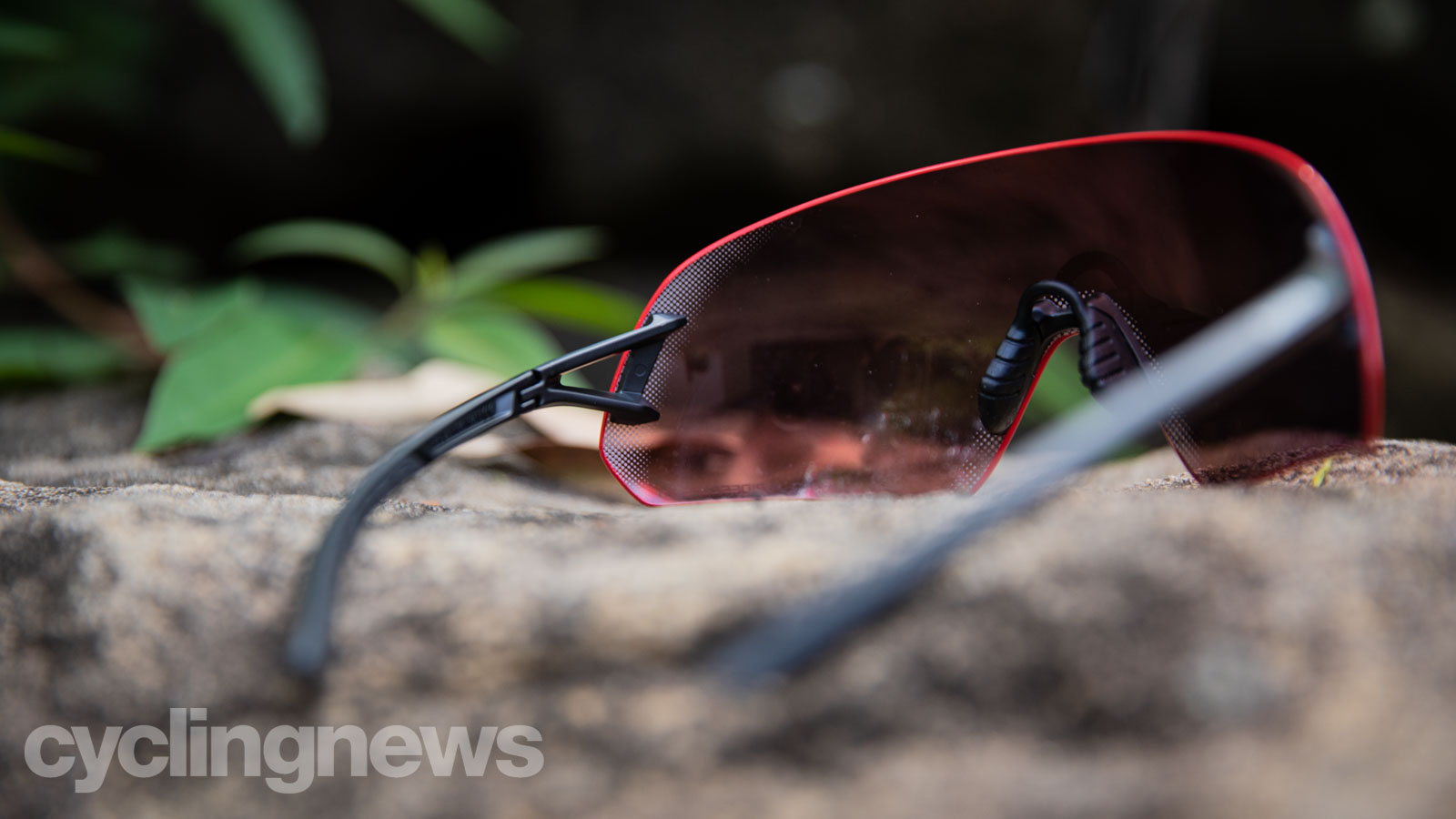
Verdict
Sunglasses are a personal thing, and aesthetics are as much a part of the deal as performance. To my eyes, the Shimano Aerolite P ticks both boxes. While some are likely to disagree on the first point, they provide fantastic visual clarity, and the claims about contrast and detail find the right balance of bringing out detail without making you dizzy. Best of all, priced at $TBC/£TBC/ AU$179, they are notably cheaper than most of their competitors offering the same sort of tuned optics.
Shimano isn’t the first name that comes to mind when you think of eyewear, but in typical Shimano fashion, they are top quality, and I believe these new RideScape lenses may just change people’s tune.
Based on the Gold Coast of Australia, Colin has written tech content for cycling publication for a decade. With hundreds of buyer's guides, reviews and how-tos published in Bike Radar, Cyclingnews, Bike Perfect and Cycling Weekly, as well as in numerous publications dedicated to his other passion, skiing.
Colin was a key contributor to Cyclingnews between 2019 and 2021, during which time he helped build the site's tech coverage from the ground up. Nowadays he works full-time as the news and content editor of Flow MTB magazine.
